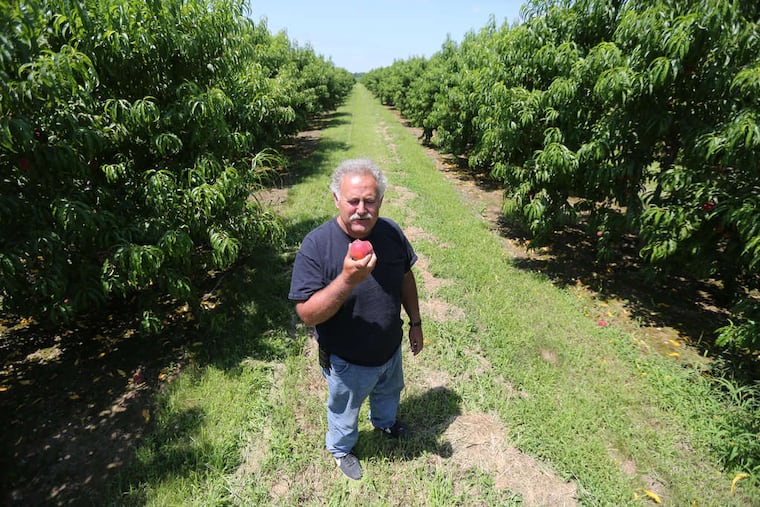Jersey peach crop seems to withstand cold snap just fine
This week’s Arctic blast was bad news for the flowering magnolias and cherry trees that brought springlike color to the region early this month, but not for peaches.

This week's arctic blast was bad news for the explosion of flowering magnolias and cherry trees that brought springlike color to the region earlier this month.
But New Jersey officials say the warm-cold punch that so rudely shriveled all of those cheerful pink and white blossoms has likely not damaged the state's economically important peach crop, which saw extensive weather damage last year.
Peaches "were not yet at the bloom stage" this week, explained Hemant Gohil, a fruit specialist with the New Jersey Department of Agriculture and the Rutgers Extension agent for Gloucester County, the state's leading peach-producing county.
"Last year, we were right in the middle of bloom" in April, when buds had appeared, "and we had a cold snap," Gohil said.
While the region experienced several unseasonably warm days before this week's cold snap, peach buds in South Jersey have "remained tight," Gohil said, and do not reveal signs that they have begun to "break dormancy." Instead, this week's cold likely "hardened" the buds, he said, making them more resilient.
With a typical annual output of 33,000 tons, New Jersey is the fourth-largest peach-growing state, after California, South Carolina, and Georgia, with nearly all of its peaches sold fresh to supermarkets, farm markets, and specialty stores. The U.S. Department of Agriculture's marketing service reports the average wholesale production value of New Jersey peaches to be $30 million to $35 million annually.
This week's snow, wind, and temperatures in the high teens and low 20s "didn't come at the right time" to cause damage, said Santo Maccherone, president of the New Jersey Peach Promotion Council.
"You like to see them bloom around Easter, between the 10th and 15th of April," said Maccherone, who grows peaches, along with "a few apples and plums," on 150 acres in Swedesboro.
Bees begin to fertilize when peaches are in full flower and their buds have swelled, he explained. "But if we get temperatures of 28 degrees and they're blooming, we'll see 90 percent kill." Peaches form new buds in August, and these can usually survive winter temperatures as low as zero provided they have not opened.
Last week, in anticipation of the freezing temperatures that blew in Tuesday, the New Jersey Department of Environmental Protection announced that fruit growers could use smudge pots and open fires in their orchards to keep buds from freezing. These methods are normally banned because they generate soot and other air pollution.
But Ray Samulis, Extension agent for Burlington County, said few farmers avail themselves of these methods because few of them have smudge pots, and the cost of firewood and steel drums needed to protect 25 or 50 acres of orchards is prohibitive.
Gohil said weather predictions for the next 10 days do not foresee temperatures rising above 50 degrees in South Jersey, meaning there is little risk of early blossoming.
"This is good," he said. "Farmers would want this."